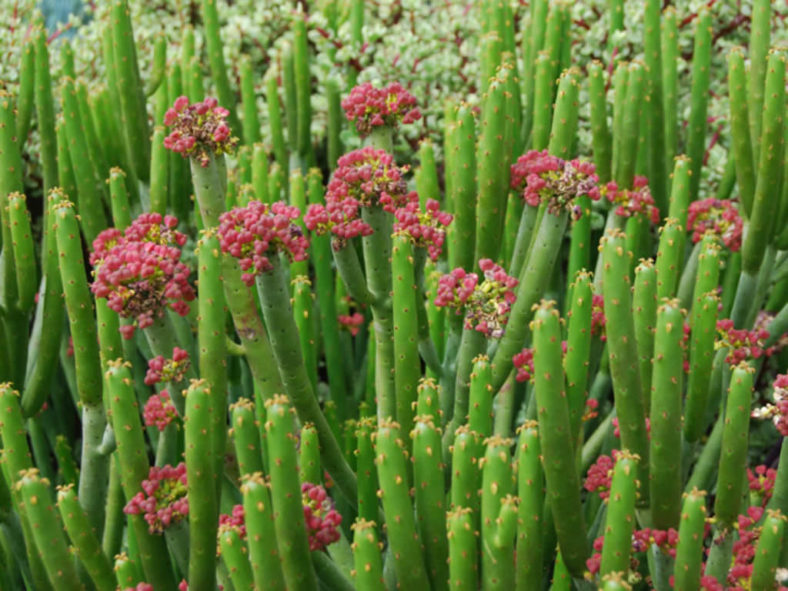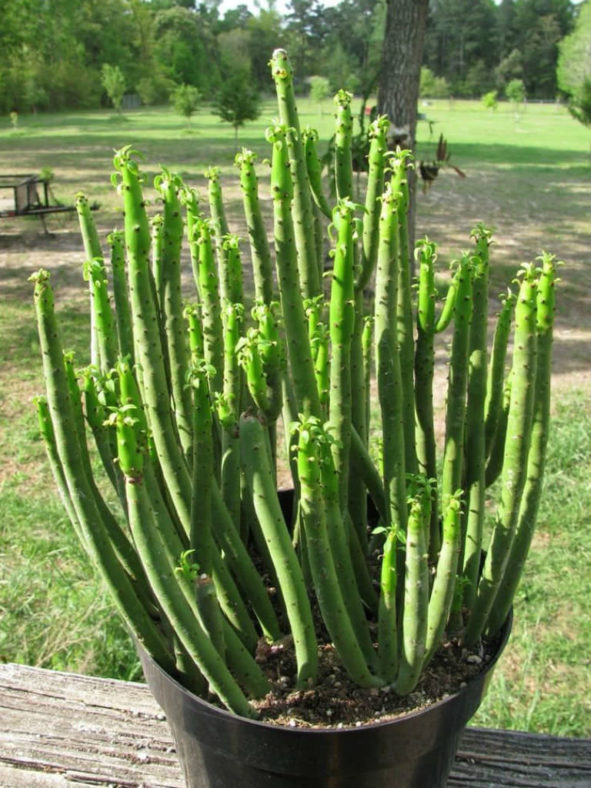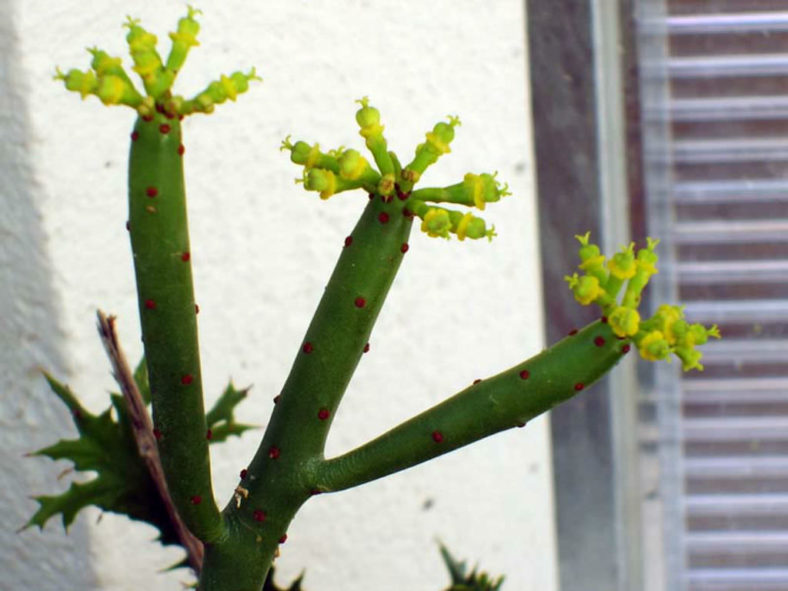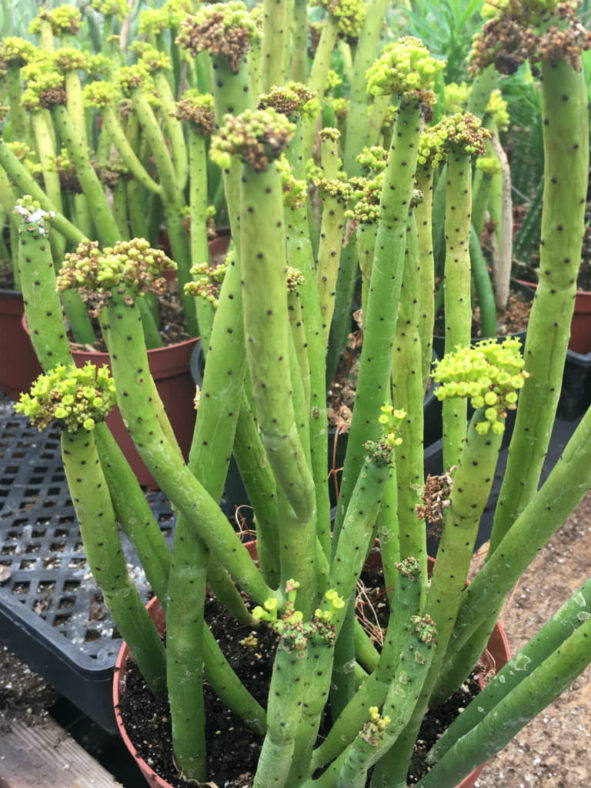Scientific Name
Euphorbia alluaudii Drake
Common Name(s)
Bush Euphorbia, Cat Tails Euphorbia, Milk Bush, Pencil Tree, Sausage Tree, Stick Cactus, Stick Euphorbia, Stick Plant, Yellow-leaf
Synonym(s)
Euphorbia alluaudii subsp. alluaudii, Euphorbia leucodendron, Tirucalia alluaudii
Scientific Classification
Family: Euphorbiaceae
Subfamily: Euphorbioideae
Tribe: Euphorbieae
Subtribe: Euphorbiinae
Genus: Euphorbia
Etymology
The specific epithet "alluaudii (al-loo-WAH-dee-eye) honors Charles A. Alluaud (1861-1949), a French explorer and entomologist.
Origin
Euphorbia alluaudii is native to Madagascar. It grows in subtropical or tropical dry forests, subtropical or tropical dry shrubland, and rocky areas.
Description
Euphorbia alluaudii, also known as Euphorbia leucodendron, is a densely branched, succulent shrub or small tree with narrow, yellowish-green, cylindrical branches. It can grow up to 13.1 feet (4 m) tall. The branches are up to 0.6 inches (1.5 cm) in diameter, initially erect, then arch outwards. They are tipped with many green, up to 0.5 inches (1.3 cm) long leaves in summer and brown dotted where the leaves were previously attached.
Tiny yellow-green flower structures (cyathia) that hold the even smaller flowers appear in spring and summer, loosely clustered towards the ends of the branches. The fruits are red and somewhat heart-shaped capsules with three locules, each with one seed.

Hardiness
USDA hardiness zone 9a to 11b: from 20 °F (−6.7 °C) to 50 °F (+10 °C).
How to Grow and Care
Euphorbias are very easy to care for. They require a little pampering to become established, but once they are, they are self-sufficient. More die from too much care and watering than from neglect. Euphorbias need well-draining soil and lots of sunlight. They are not particular about soil pH but cannot tolerate wet soil. Unlike most succulents, Euphorbia does not handle long periods of drought well. It may need weekly watering during the summer. Water whenever the soil is dry several inches below the surface. Water deeply, but don't let them sit in wet soil, which can cause root rot. Add some organic matter or fertilizer to the planting hole. Feed with a half-strength fertilizer monthly if you are growing them in containers or your soil is poor.
Euphorbia can be grown from seed, but they can be difficult to germinate (or even find). It is usually propagated by cuttings. This can be tricky because of the exuding sap. Rooting hormone is recommended with Euphorbias. They tend to grow problem-free, but there are a few pests and diseases to be alert for.
See more at How to Grow and Care for Euphorbia.
Forms
Links
- Back to genus Euphorbia
- Succupedia: Browse succulents by Scientific Name, Common Name, Genus, Family, USDA Hardiness Zone, Origin, or cacti by Genus
Photo Gallery
Click on a photo to see a larger version.


